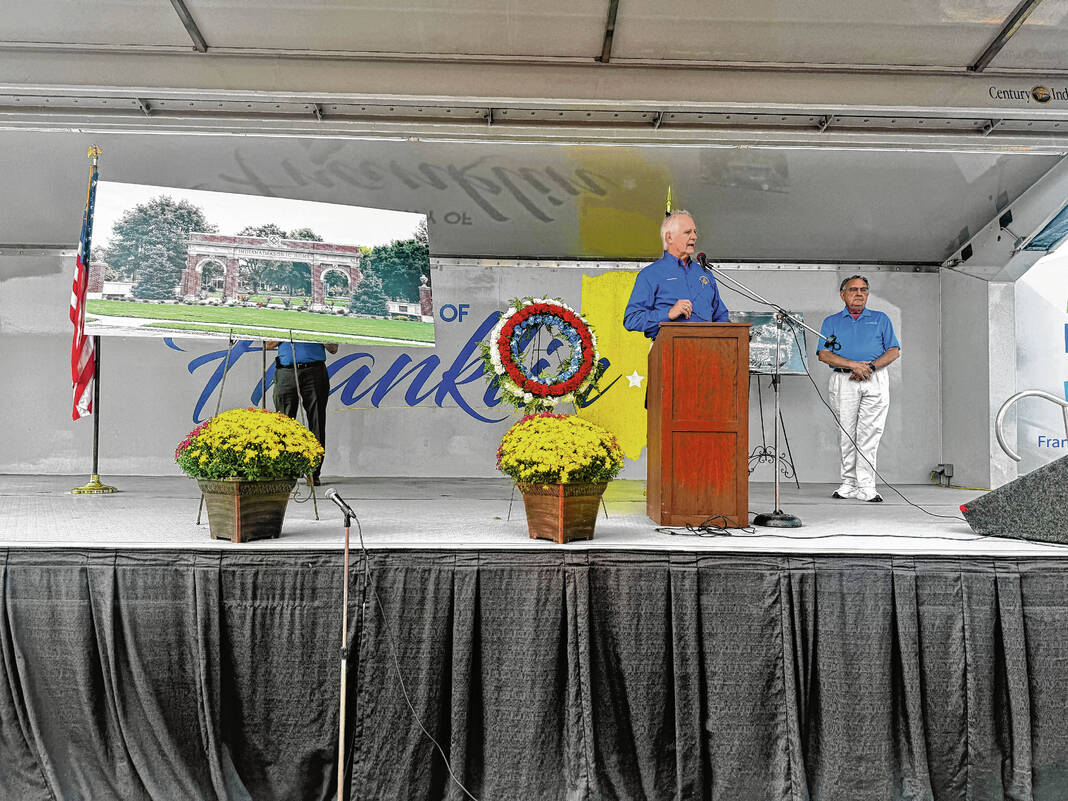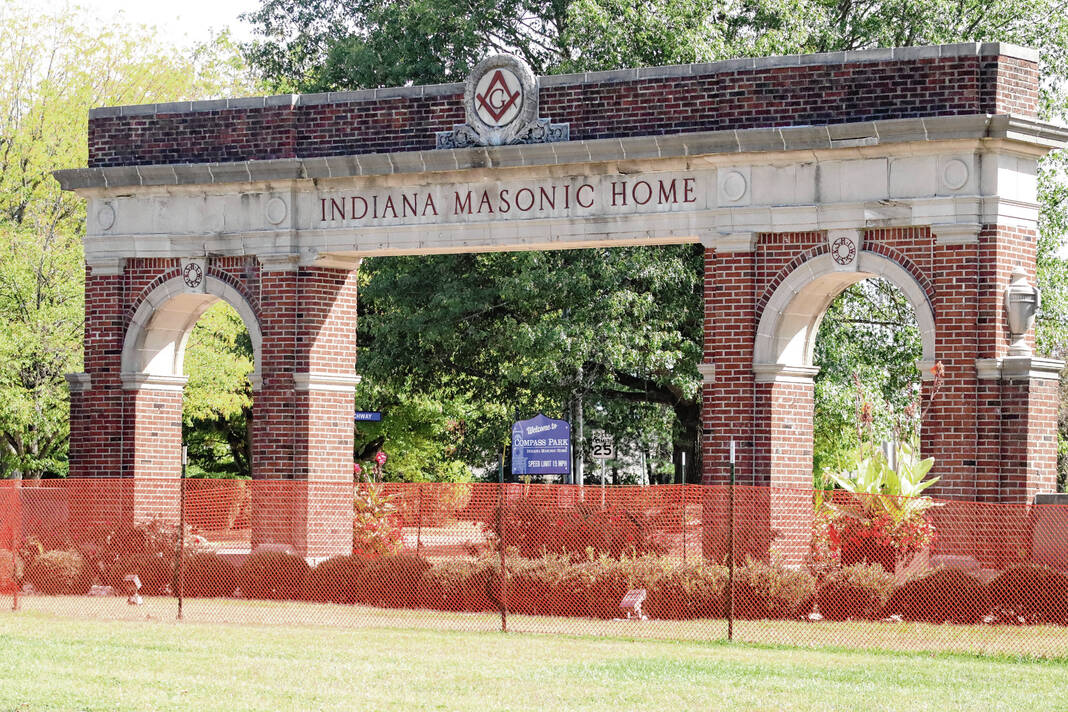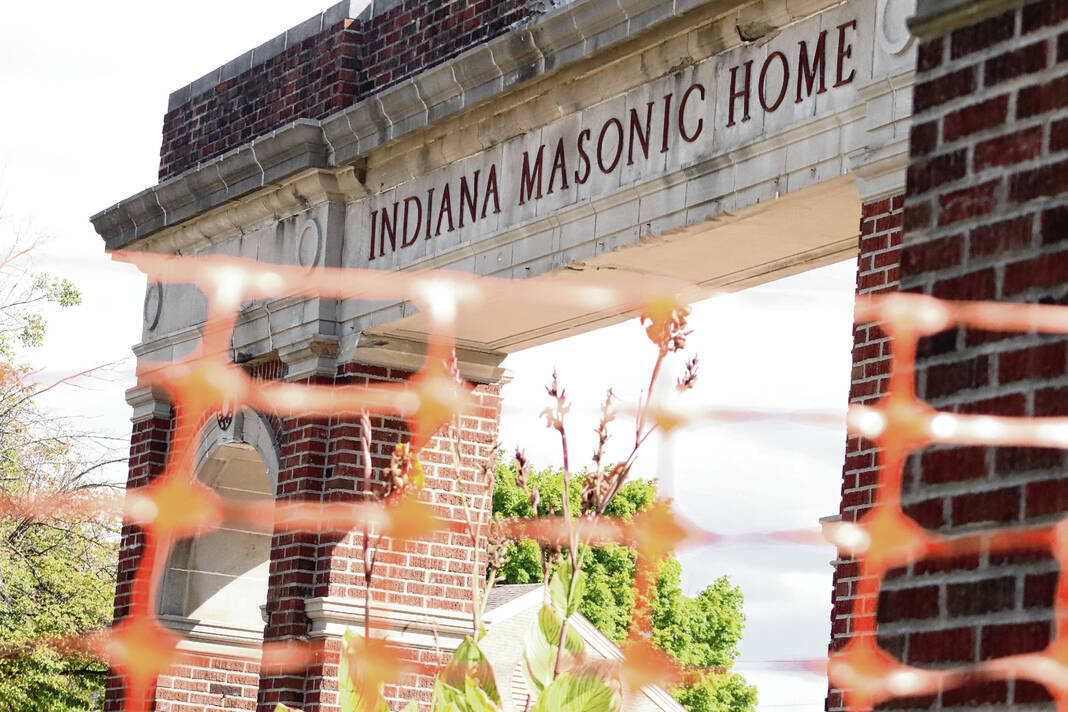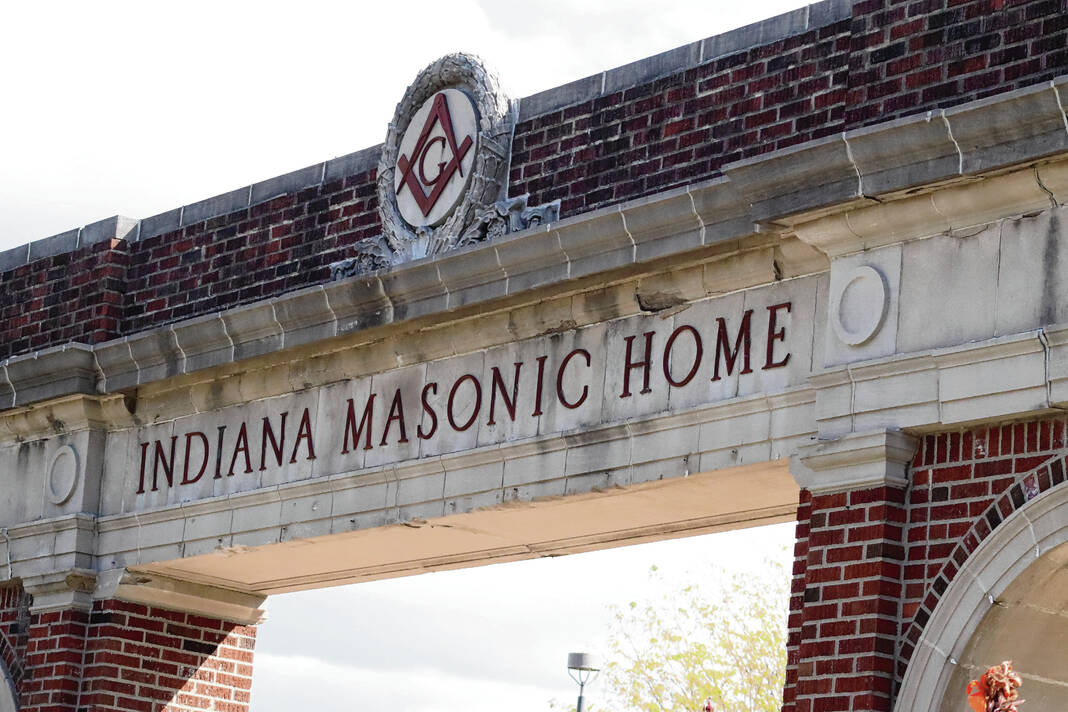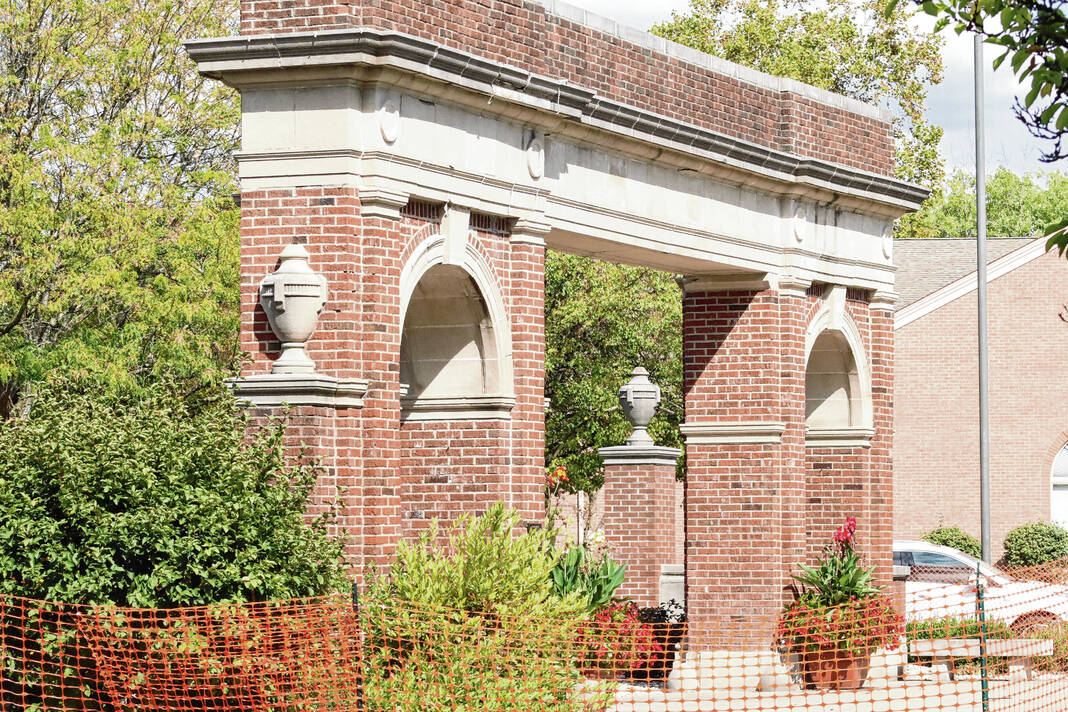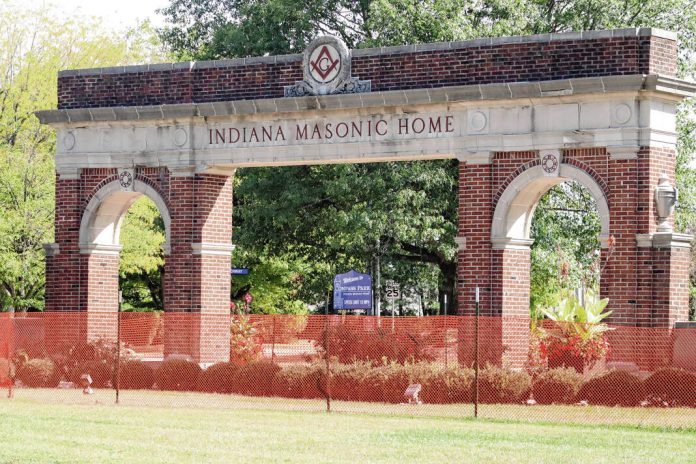
The arches of the Indiana Masonic Home at the southeast corner of State Street and South Street, Franklin, are expected to be demolished this winter. The arches have risen above the corner for about 100 years. Elissa Maudlin | Daily Journal
A “landmark” and “symbol” of the Indiana Masonic Home is being taken down after a century of use. As the structure is demolished, the community is thinking about its legacy.
The Indiana Masonic Home Board of Directors, with support from the Grand Lodge of Indiana, recently decided to demolish the historic stone arches that have stood on the campus in Franklin for over a century. Executive Director Mike Spencer says it was a decision “that nobody wanted or wanted to make” but it came down to the cost of repairs.
Although Indiana Masonic Home, also known as Compass Park, is pursuing a multi-million dollar expansion project as part of its master plan, Spencer said demolishing the arches has nothing to do with the expansion. The arches are in poor repair because of weathering, the way the arches were constructed and the passage of time.
The demolition
The arches are unsafe. The middle of the arches has started to sag and weathering has caused the stone to deteriorate. It has turns to powder in some areas and pieces of the arches have fallen off, posing a danger to passersby. This led to the decision to fence off the structure a few months ago, Spencer said.
However, it can’t remain fenced off forever because it’s not “good curb appeal,” With a fence around it, the structure isn’t the same beloved place where people can do photo shoots or picnic, he said.
It would take $350,000 to repair the structure without redoing all of the stonework, according to an estimate. However, the full restoration could cost close to a million dollars, Spencer said.
When it was asked of the board, members determined the restoration of the arches didn’t meet the mission of the home. Leadership reached out to some preservation groups but wasn’t able to find one interested in funding it, Spencer said.
“It was a decision that wasn’t made easily or lightly. It was a decision that was made to be the best financial steward of the dollars and resources that we have available to us,” Spencer said. “It was a decision made from a safety standpoint for anybody that would visit that area. It was a decision that none of us really wanted, it wasn’t the decision we wanted to make but it was a decision that just the sheer price tag of it forced us to make.”
Compass Park is a nonprofit organization and leadership had to think about what is truly the best use of their funds.
“I get it. I think those arches are important too, but are they a million dollars important when they don’t do anything?” Spencer said. “Is a sign worth a million dollars or is the good we do for people … here more important than that use of a million dollars or a million dollars toward building more apartments that people would get good out of? Where is a million dollars better spent?”
Spencer said there are no donations currently on hand that have been earmarked to restore the arches. A small amount of money was donated for the arches about 15 years ago and was used at the time in its entirety for tuck-pointing and sealing. There are no remaining funds from that gift, he said.
“To raise a million dollars, we would need $1,000 from 1,000 donors. This is not a simple task nor is there time for a prolonged fundraising effort,” Spencer said.
There is no date set for the demolition yet but Spencer expects it will be demolished before harsh winter sets in. There will be an attempt to save an “ornamental” material from the arches, but it may not be possible to save much. It is expected that the stone will crumble when the arches are taken down, he said.
Compass Park held a ceremony to decommission the arches on Sept. 8 during the facility’s fall festival. In the future, Compass Park may build some a monumental arch or signage structure as homage to the lost arches, Spencer said.
Buy select photos from this gallery
The history
A contract to build the arches was signed in 1921 as an entryway for the campus, which started in 1916 for widows and orphans of the fraternity. The structure stopped being an entryway in the ’60s when a truck hit and damaged them.
But despite not being open to traffic, Spencer said the arches still are a “symbol” or “landmark” of the organization. When the campus housed a school, students would walk under the arches to symbolize their graduation. Some people also take wedding pictures near the structure, as there is an event and wedding venue onsite.
“It’s emotional. There’s 80, 90-year-old Masons, it’s an emotional thing for them. It’s been there since 1921 so long as anybody here has been alive,” he said.
For some at Compass Park, the arches are interconnected with the organization’s mission. Joy Cantwell, 80, has enjoyed seeing arches since she was a child and believes the structure signifies more than just a stone entryway. Cantwell believes the arch signifies help for people, whether it be the students of the past or the seniors of today.
“I went to school with several of the students that lived here for various reasons, lived in the homes, boys and girls. They had someone to take care of them, to clothe them, to feed them, to teach them, to be their parents when their parents were not able to do it. … ” Cantwell said. “We knew that if we got old and unable to take care of ourselves that there was always the Masonic Home that would take care of us.”
Though the years buildings have been torn down and rebuilt, but Cantwell said the arches have been a constant.
“When you think of the Masonic Home, you think of that arch,” she said.
Joe Williams, 65, is a Mason and his grandmather was raised at the home. To him, the arches are a symbol of the facility’s history and integrity.
“That arch represents so many scared little kids that got a second chance, in fact a good shot of life, by going through those arches into the orphanage ..,” he said. “It represents so much to what that facility was actually meant to be.”
Without that historical landmark for the property, the facility turns into just “another big healthcare facility,” Williams said.
Not everyone speaking out about the arches is opposed to their demolition. John J. Quinn, 76, a former board member who has been a Mason since 1986, understands why they need to go. While he cherishes them too, everything has a life cycle, he said.
“I’ve seen several buildings come down through the years. We always like history, but there comes a time that your old 1935 Ford no longer runs anymore and it just has to be replaced ..,” he said. “I support it because there’s no sense spending money to fix something that could be used a lot better for getting other people the care that they needed and getting proper other buildings constructed.”
Quinn would like to see money go toward housing and more staff.
Donnie Robinette said he spent 23 years as a “loyal servent” to residents and as a Franklin 107 Past Master, and the loss of the arches is “tragic” but it is one of many historic buildings that have been lost on campus. However, like the arches, those structures were “beyond repair and use.”
“These structures were never intended to have a life span of 100 or more years,” he said. “I am forced to agree that it is time to retire our iconic arch. I’ve seen it sway in many storms, hit by cars and trucks alike, and witnessed the debris of brick and limestone … I hate the loss but I also hate witnessing the arch deteriorate. It is truly beyond repair.”


